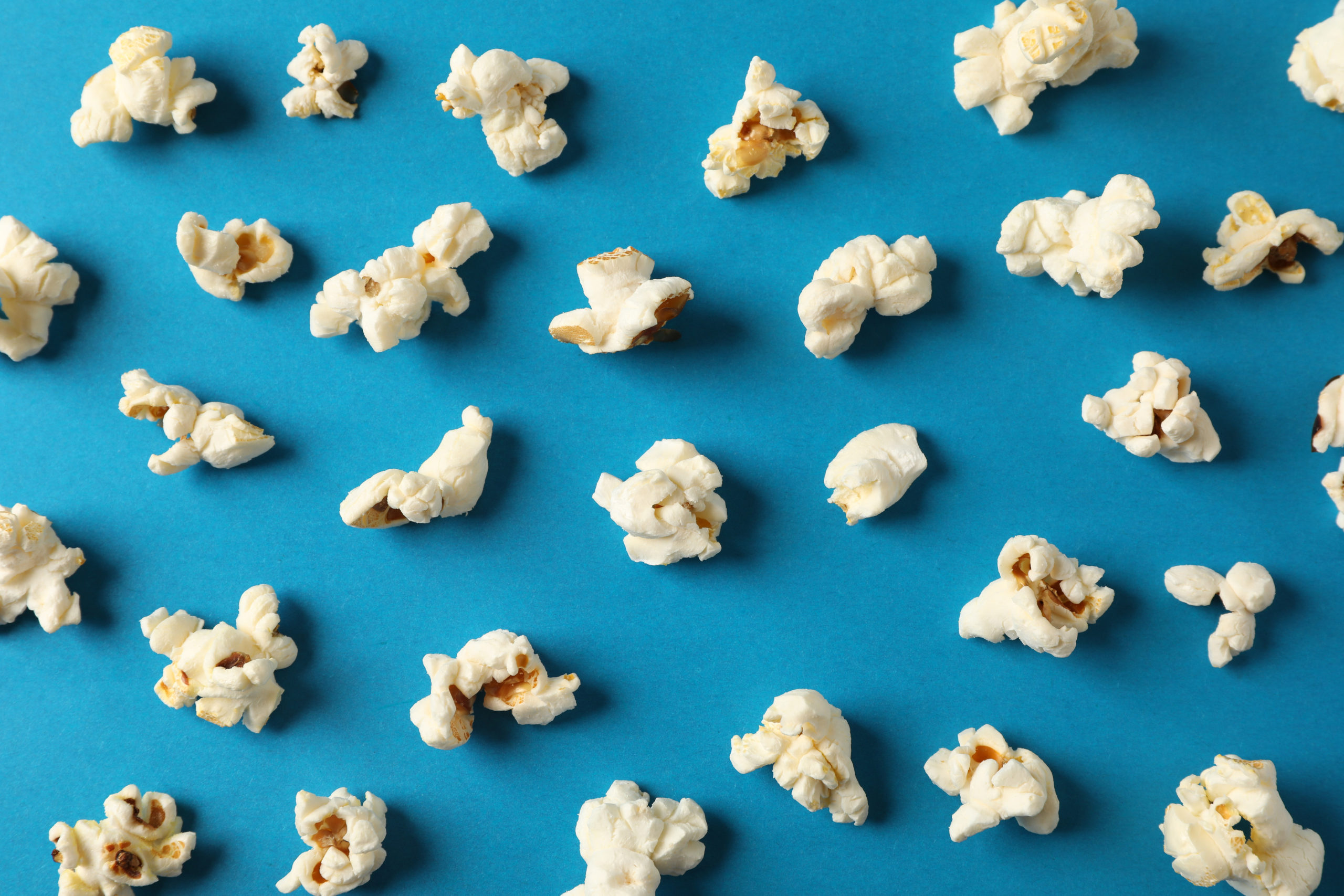Sitting in front of our bigger-than-really-necessary TV, I stuffed my face with fistfuls of endosperm, pondering popcorn. If it were running for Prime Minister, I'd vote for it.
The Endosperm
Endosperm means "within seed." When its not feeding us as the main component of grains, this kind of tissue provides nutrition for the growing embryo. A popcorn kernel has soft, wet endosperm surrounded by hard, strong endosperm, called pericarp.
Inside Story
The inner endosperm is mostly starch. Starch is made of strings of sugar molecules. It's nature's way of storing sugar, which living things use as fuel to operate. It comes in different forms. Corn and other grains have A type starch, while tubers, like potatoes, have B type. Another key ingredient is water. Popcorn usually requires a moisture content of 16 to 20% to pop. The pericarp, meanwhile, is mostly cellulose. Cellulose is also made of strings of sugar, but we and many other animals can't break the bonds that hold the sugar molecules together. It's what makes wood woody.
The Heat is On
You can heat popcorn in many ways (although using cellphones was just a hoax). Microwave ovens work by exciting water and fat molecules with radio waves. The convenience of microwave popcorn seems hard to beat, although the manufacturing of it is a bit disturbing.
Pop Goes the Pericarp
When you heat a kernel of popcorn, the wet starch inside becomes softer and more pliable. The water turns to steam, resulting in higher pressure. If the heat is too high or unevenly distributed, only part of the kernel will pop. If the heat is too low, steam can leak out slowly so the pressure is lost. By about 180C, the inside is 930 kPa, enough pressure to rupture the casing so all hull breaks loose.
Starch Trek
The starch granules expand into jelly-like bubbles, increasing the volume forty times and turning the kernel inside out. Popcorn starch is about 60 percent puffier than regular corn. Some of the type A starch gets changed into amorphous starch. It expands so quickly that the starch cools down and turns into a solid foam.
Good Breeding
Archeologists found 5,600 years old popcorn (Zea mays everta) in New Mexico. About twenty-five varieties of popcorn occur naturally and the popcorn industry has been busy working on hybrids with desirable properties.
Hard Bodies
For example, pop-ability (the proportion of popped kernels) depends on how well the tough outer pericarp holds it all in. Pericarp with a more highly ordered crystalline arrangement of cellulose molecules are stronger so they can withstand a higher pressure and retain more moisture, resulting in more popped kernels.
Volume - This Counts
Another feature considered important is volume. Popcorn is now twice as big as fifty years ago. Some complain that popcorn taste has been lost for the sake of volume. The cooking conditions can also help. This paper based on the ideal gas law describes how lower pressure around the popcorn can produce on bigger popcorn.
So popcorn is not just light pop culture stuff. Do you know of any other snacks that give you as much bang for your buck?
